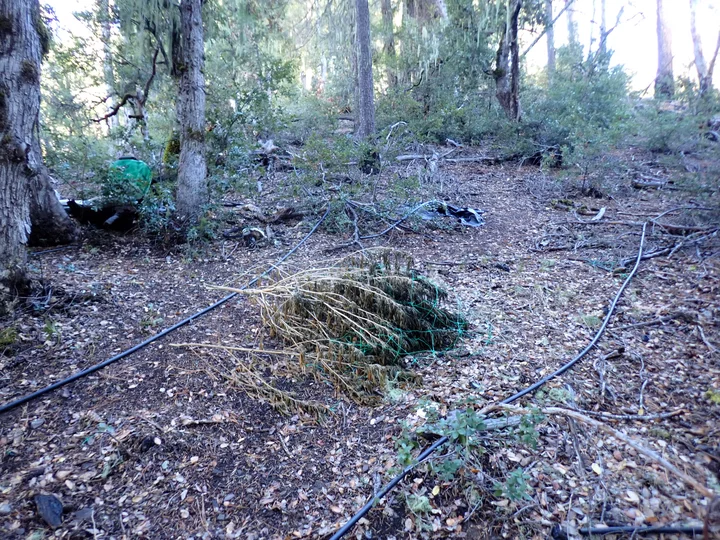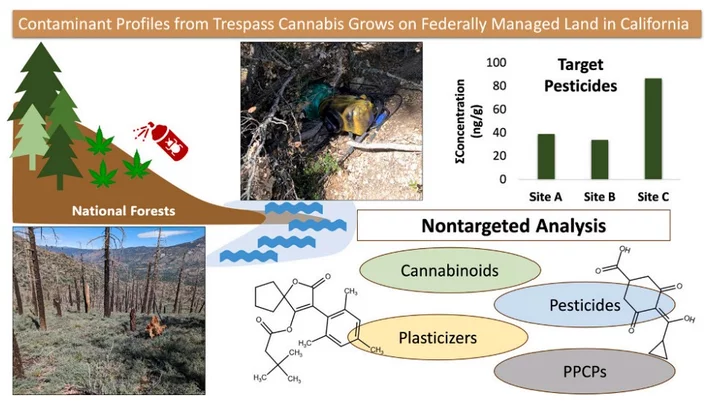Photo: IERC.
Press release from the Integral Ecology Research Center:
A new peer-reviewed study published in Science of the Total Environment sheds light on the persistent chemical contaminants left behind at illegal cannabis cultivation sites, also known as “trespass grows,” on California’s federally managed lands. The research, conducted by scientists from the U.S. Geological Survey (USGS) in partnership with the Integral Ecology Research Center (IERC) and with support from the U.S. Forest Service Law Enforcement and Investigations, provides the most comprehensive look to date at how pesticides, pharmaceuticals, and other organic pollutants linger long after grow sites have been abandoned. (Link here.)
Key Findings
Researchers investigated former illegal cannabis cultivation sites in Six Rivers National Forest, Shasta-Trinity National Forest, and San Bernardino National Forest. Even months to years after law enforcement shut down these operations, the study found:
Pesticides such as imidacloprid, malathion, and myclobutanil in topsoil, with concentrations reaching significant levels.
Cannabis-related compounds including THC and cannabidiol persisting in soils and water and bed sediments, suggesting contamination of surrounding ecosystems.
Plasticizers, pharmaceuticals, and personal care products associated with the extensive irrigation and living infrastructure used and remaining at these sites.
The findings highlight that these sites leave a lasting chemical footprint, raising concerns about impacts on wildlife, water quality, and forest ecosystems from the thousands of sites that remain on California’s National Forest Lands.
A Collaborative Effort
This study underscores the power of partnership. USGS scientists and IERC, a Humboldt County-based non-profit conservation organization, worked hand-in-hand with the U.S. Forest Service Law Enforcement and Investigations Branch, whose on-the-ground efforts made sampling possible.
“By documenting these contaminants, we are taking the first step in understanding the long-term ecological risks posed by illegal cannabis cultivation,” said lead author Gabrielle Black of USGS.
Illegal cultivation sites not only degrade critical habitats but also threaten drinking water supplies, fisheries, and wildlife, including threatened and endangered species. Findings from this study will support future remediation efforts and policy decisions aimed at protecting California’s natural heritage.
“This research highlights the urgent need to address the legacy of trespass grows,” said Mourad Gabriel, Co-Director of IERC. “Together, we can better safeguard our public lands and the communities and species that depend on them.”


CLICK TO MANAGE